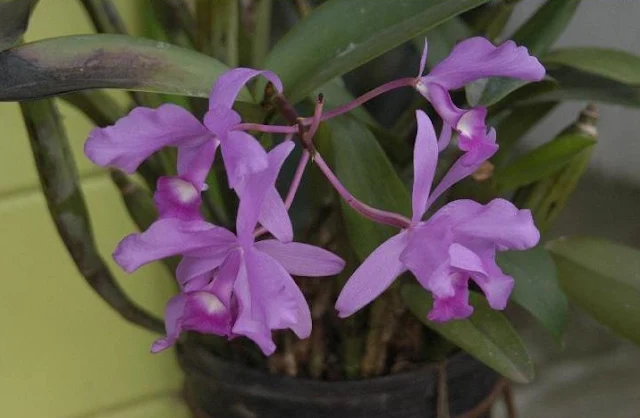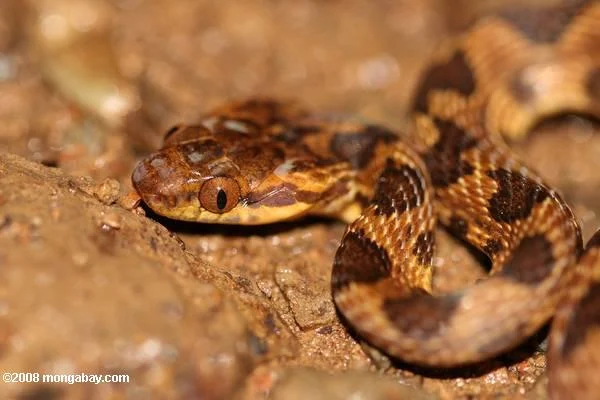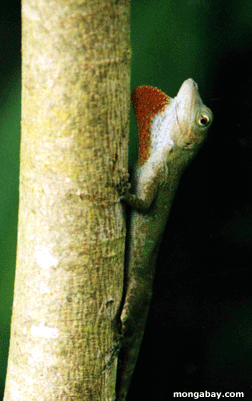 |
| Costa Rica Page in My World-Map-Software |
COSTA RICA :
On his final voyage to the New World in 1502, Christopher Columbus came ashore on Costa Rica's Caribbean coastline (near Limon) and the indigenous Indians presented him with an offering of gold.
The lure of riches in the Americas was a strong magnet for European adventures of-the-day, but those that ventured to Costa Rica were confronted by an inhospitable landscape of coastal swamps and hostile Indians tribes - and most did not survive.
The Spanish persisted, and by the mid-16th century a few small settlements were successfully established; Cartago was declared the capital, and the colony was ruled by a governor appointed by the Spanish empire’s regional capital of Guatemala.
Unlike neighboring colonies, Costa Rica was slow to grow, and remained a collection of subsistence farmers for the next two centuries. With very few exports of real value, it quietly remained off the radar screen of the Spanish Crown.
After the overthrow of the Spanish King by Napoleon, Costa Rica and others declared their independence from Spain in 1821. Then, Costa Rica, as well as El Salvador Guatemala, Honduras and Nicaragua formed the United Provinces of Central America, but that federation quickly dissolved, and Costa Rica became an independent state in 1838.
 |
| Juan Mora Fernandez |
Juan Mora Fernandez (the first head of state) encouraged the cultivation of coffee, and over time the powerful coffee barons helped finance a political revolution that would change the country forever.
 |
| Coffee Plant |
Over the next century an assortment of presidents and ambitious military dictators came and went, but for the most part, Costa Rica avoided the chaos of bloody coups, rebellions and citizen revolts endemic to other Central American countries.
In the mid-1900s, democracy was the order-of-the-day, but when the United Social Christian Party refused to leave power after losing the 1948 general election, civil war was in the wind.
The opposition in that brief 40-day uprising was led by Jose Mar¡a (Don Pepe) Figueres Ferrerhe, and in the end he founded a new republic; banned the Communist Party; women could vote; blacks gained citizenship; and in a brilliant stroke of governing he abolished the armed forces and established a term limit for all future presidents.
When Don Pepe died in 1990 (a justifiable national hero to this day) his innovative leadership had earned Costa Rica an enviable international reputation as a peaceful, stable democracy in a region of instability.
Fun Facts of Costa-Rica:
1) Costa Ricans refer to themselves as Ticos (males) or Ticas (females).
 |
| Guanacaste is Costa Rica's national tree |
 |
| The national flower is the guaria morada, an orchid |
2) The Guanacaste is Costa Rica's national tree and the clay-colored thrush is the national bird. The national flower is the guaria morada, an orchid.
 |
| clay-colored thrush is the national bird. |
3) Costa Rica has a population of 4.5 million and a life expectancy of almost 77 years, one of the highest in the world.
 |
| There are 800 miles of coastline in Costa Rica between the Pacific and Caribbean coasts. |
4) There are 800 miles of coastline in Costa Rica between the Pacific and Caribbean coasts.
 |
| San Jose |
5) Costa Rica is divided into seven provinces: San Jose, Alajuela, Heredia, Cartago, Guanacaste, Puntarenas and Limon.
6) There are more than 121 volcanic formations in Costa Rica, and seven of them are active.
 |
| Poas Volcano |
Poas Volcano has the second widest crater in the world (nearly one mile in diameter), and
 |
| Arenal Volcano |
Arenal Volcano is one of the ten most active volcanoes in the world.
 |
| Chirripo Mountain |
7) Chirripo Mountain is the highest point in Costa Rica at 12,500 feet. The country's lowest point is 790 feet below sea level in the caves of Barra Honda National Park.
 |
| caves of Barra Honda National Park |
8) Irazu is the tallest volcano in Costa Rica at 11,259 feet.
9) Costa Rica hosts more than 5% of the world’s biodiversity even though its landmass only takes up .03% of the planet's surface. There are more than:
130 species of freshwater fish
 |
| Rooster-fish |
160 species of amphibians
 |
| Glass_frog |
 |
| Poison Arrow Frog |
208 species of mammals
 |
| White-faced Capuchin (Cebus capucinus) |
 |
| Squirrel_monkey |
 |
| red-tailed-squirrel |
220 species of reptiles
 |
| American-crocodile |
 |
| common chunk headed snake. |
 |
| Anolis Lizerd |
 |
| hatchling-Olive-ridley sea turtle. |
850 species of birds
 |
| Blue-Hummingbird |
1,000 species of butterflies
1,200 varieties of orchids
 |
| bee approaching a bird of paradise flower. |
9,000 species of plants
34,000 species of insects
 |
| Black Honey Bee |
 |
| Giant brown long-horned beetle |
 |
| Brown-katydid. |
and still counting as new species are discovered every day
10) More than 25% of Costa Rica’s land is dedicated to national parks, reserves and wildlife refuges. There are more than 100 different protected areas to visit.
 |
| A soda is a small, informal restaurant that serves traditional meals like chicken, rice, beans |
11) A soda is a small, informal restaurant that serves traditional meals like chicken, rice, beans and salad for $2-$3 a plate.
12) A pulperia is a neighborhood store that sells essential foodstuffs like canned goods, eggs, milk, bread and some produce.
13) For most of Costa Rica, the dry season runs from December through April. During these months, the Pacific coast and most of the Central Valley receive little rain, or the odd afternoon shower. May through mid-November is considered the rainy season, when days are marked by sunny mornings and late afternoon thunderstorms. The Caribbean coast, Monteverde and Arenal areas are exceptions to this rule, and have no distinct dry season.
 |
| The Tempisque River Bridge |
14) The Tempisque River Bridge (known locally as El Puente de Amistad) that connects the mainland to the Nicoya Peninsula was a gift from Taiwan.
15) Costa Rica's official language is Spanish, though a large number of its citizens are bilingual. English, due to its status as the international language of tourists, is the most common second language in Costa Rica.
 |
| Today, driven by agricultural products (especially bananas and coffee) |
Today, driven by agricultural products (especially bananas and coffee), and strong tourism and technology industries, Costa Rica enjoys a high standard of living, and remains the true success story of Central America.
Costa Rica Industry:
Costa Rica is one of the world's largest per capita producers of hydroelectric power with big installations at Lakes Arenal and Cachi.
 |
| hydroelectric power with big installations at Lakes Arenal and Cachi. |
For years it exported electricity to Nicaragua and El Salvador, but domestic use increased so that much is still generated with expensive, imported oil. Recently Daylight Saving was tried in order to save power usage, but was abandoned due to public pressure and concern for children walking to school on narrow roads in the dark. Though there has been some oil exploration and talk of a trans-Costa Rican pipeline to transport Alaskan and Venezuelan oil, presently no oil is produced in the country, which has made balancing the economy difficult.
Costa Rica offers tax incentives to labor-intensive industries producing items for export. Many plants import textiles and other raw materials, hire Costa Ricans to assemble them, and export finished products such as underwear. My uniform shirts on the Alaska ferry were labeled "assembled in Costa Rica". One successful operator imports used typewriters from North America, reconditions them in a modem plant, and exports them wholesale all over Latin America. There's plenty of room for imagination here! Costa Rica would rather produce many products internally than buy with foreign exchange, but with a well-scattered population only as big as a large city, there isn't the market to make it pay.
 |
| Eco-Tourism |
Costa Rica's major non-agricultural industry, aside from government, is tourism. Ecotourists can find more species of birds, wildlife, and plants growing naturally here than in any other similar area. With planning, tourism can make preserved tropical forests and beaches more profitable than any other use of the same land-and keep it so forever.
 |
| Costa-rican-Marriott Hotel-san jose. |
Recently Costa Rica has attracted travelers from all over the world and their numbers have grown rapidly. Hotels near San Jose and at the beaches and tours and lodges for nature lovers are increasing though sometimes still are less than the demand. Costa Rica has so much to offer the tourist, and does it so well, that it is rapidly being discovered by thousands who ride jets instead of tossing Spanish galleons.
 |
| Picture of Coffee Tree |
 |
| Shoveling coffee beans inside the truck. |
The main products of Costa Rica are agricultural...fruit and coffee exports are way up on the list. As far as industries are concerned, the tourism industry had over 2 million visitors last year, and it is expected to be a bit more than that this year
Costa Rican Sports
Costa Ricans are avid sports fans and interested in a variety of spectator sports.
 |
| The national game of Costa Rica is undoubtedly, soccer |
The national game of Costa Rica is undoubtedly, soccer! Sports in Costa Rica form an integral part of the Costa Rican social life.
 |
| Mid-jet-ski-papagayo-guanacaste |
Some of the sports that can be practiced are tennis, running, sport fishing, trekking, boxing, motocross, swimming, baseball, basketball, diving, snorkeling, and of course surfing.
 |
| Sports_fishing_costa_rica. |






















 Online Movies
Online Movies
No comments:
Post a Comment